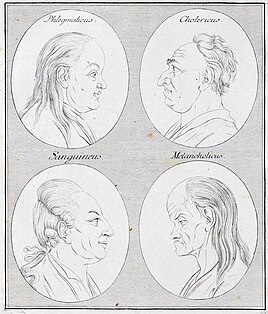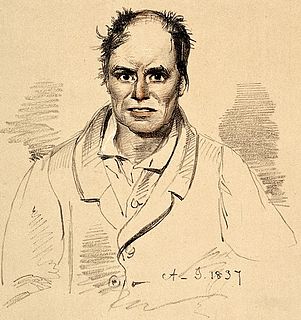Related Research Articles
Questionnaire construction refers to the design of a questionnaire to gather statistically useful information about a given topic. When properly constructed and responsibly administered, questionnaires can provide valuable data about any given subject.

A Likert scale is a psychometric scale commonly involved in research that employs questionnaires. It is the most widely used approach to scaling responses in survey research, such that the term is often used interchangeably with rating scale, although there are other types of rating scales.

A personality test is a method of assessing human personality constructs. Most personality assessment instruments are in fact introspective self-report questionnaire measures or reports from life records (L-data) such as rating scales. Attempts to construct actual performance tests of personality have been very limited even though Raymond Cattell with his colleague Frank Warburton compiled a list of over 2000 separate objective tests that could be used in constructing objective personality tests. One exception however, was the Objective-Analytic Test Battery, a performance test designed to quantitatively measure 10 factor-analytically discerned personality trait dimensions. A major problem with both L-data and Q-data methods is that because of item transparency, rating scales and self-report questionnaires are highly susceptible to motivational and response distortion ranging all the way from lack of adequate self-insight to downright dissimulation depending on the reason/motivation for the assessment being undertaken.

Depression is a mental state of low mood and aversion to activity. Classified medically as a mental and behavioral disorder, the experience of depression affects a person's thoughts, behavior, motivation, feelings, and sense of well-being. The core symptom of depression is said to be anhedonia, which refers to loss of interest or a loss of feeling of pleasure in certain activities that usually bring joy to people. Depressed mood is a symptom of some mood disorders such as major depressive disorder or dysthymia; it is a normal temporary reaction to life events, such as the loss of a loved one; and it is also a symptom of some physical diseases and a side effect of some drugs and medical treatments. It may feature sadness, difficulty in thinking and concentration and a significant increase or decrease in appetite and time spent sleeping. People experiencing depression may have feelings of dejection, hopelessness and suicidal thoughts. It can either be short term or long term.

A questionnaire is a research instrument consisting of a series of questions for the purpose of gathering information from respondents through survey or statistical study. The questionnaire was invented by the Statistical Society of London in 1838.
Labeling theory posits that self-identity and the behavior of individuals may be determined or influenced by the terms used to describe or classify them. It is associated with the concepts of self-fulfilling prophecy and stereotyping. Labeling theory holds that deviance is not inherent in an act, but instead focuses on the tendency of majorities to negatively label minorities or those seen as deviant from standard cultural norms. The theory was prominent during the 1960s and 1970s, and some modified versions of the theory have developed and are still currently popular. Stigma is defined as a powerfully negative label that changes a person's self-concept and social identity.
Normality is a behavior that can be normal for an individual when it is consistent with the most common behavior for that person. Normal is also used to describe individual behavior that conforms to the most common behavior in society. However, normal behavior is often only recognized in contrast to abnormality. In its simplest form, normality is seen as good while abnormality is seen as bad. Someone being seen as normal or not normal can have social ramifications, such as being included, excluded or stigmatized by wider society.

The Beck Depression Inventory, created by Aaron T. Beck, is a 21-question multiple-choice self-report inventory, one of the most widely used psychometric tests for measuring the severity of depression. Its development marked a shift among mental health professionals, who had until then, viewed depression from a psychodynamic perspective, instead of it being rooted in the patient's own thoughts.
Personality Assessment Inventory (PAI), developed by Leslie Morey, is a self-report 344-item personality test that assesses a respondent's personality and psychopathology. Each item is a statement about the respondent that the respondent rates with a 4-point scale. It is used in various contexts, including psychotherapy, crisis/evaluation, forensic, personnel selection, pain/medical, and child custody assessment. The test construction strategy for the PAI was primarily deductive and rational. It shows good convergent validity with other personality tests, such as the Minnesota Multiphasic Personality Inventory and the Revised NEO Personality Inventory.
Social stigma is the disapproval of, or discrimination against, an individual or group based on perceivable social characteristics that serve to distinguish them from other members of a society. Social stigmas are commonly related to culture, gender, race, socioeconomic class, age, sexual orientation, body image, intelligence or lack thereof, and health. Stigma can also be against oneself, stemming from a negatively viewed personal attribute that results in a 'spoiled identity"
Suicide risk assessment is a process of estimating the likelihood for a person to attempt or die by suicide. The goal of a thorough risk assessment is to learn about the circumstances of an individual person with regard to suicide, including warning signs, risk factors, and protective factors. Risk for suicide is re-evaluated throughout the course of care to assess the patient's response to personal situational changes and clinical interventions. Accurate and defensible risk assessment requires a clinician to integrate a clinical judgment with the latest evidence-based practice, although accurate prediction of low base rate events, such as suicide, is inherently difficult and prone to false positives.

A self-report inventory is a type of psychological test in which a person fills out a survey or questionnaire with or without the help of an investigator. Self-report inventories often ask direct questions about personal interests, values, symptoms, behaviors, and traits or personality types. Inventories are different from tests in that there is no objectively correct answer; responses are based on opinions and subjective perceptions. Most self-report inventories are brief and can be taken or administered within five to 15 minutes, although some, such as the Minnesota Multiphasic Personality Inventory (MMPI), can take several hours to fully complete. They are popular because they can be inexpensive to give and to score, and their scores can often show good reliability.

The health belief model (HBM) is a social psychological health behavior change model developed to explain and predict health-related behaviors, particularly in regard to the uptake of health services. The HBM was developed in the 1950s by social psychologists at the U.S. Public Health Service and remains one of the best known and most widely used theories in health behavior research. The HBM suggests that people's beliefs about health problems, perceived benefits of action and barriers to action, and self-efficacy explain engagement in health-promoting behavior. A stimulus, or cue to action, must also be present in order to trigger the health-promoting behavior.
Social anxiety is the anxiety and fear specifically linked to being in social settings. Some categories of disorders associated with social anxiety include anxiety disorders, mood disorders, autistic spectrum disorders, eating disorders, and substance use disorders. Individuals with higher levels of social anxiety often avert their gazes, show fewer facial expressions, and show difficulty with initiating and maintaining a conversation. Social anxiety commonly manifests itself in the teenage years and can be persistent throughout life, however, people who experience problems in their daily functioning for an extended period of time can develop social anxiety disorder. Trait social anxiety, the stable tendency to experience this anxiety, can be distinguished from state anxiety, the momentary response to a particular social stimulus. Half of the individuals with any social fears meet the criteria for social anxiety disorder. Age, culture, and gender impact the severity of this disorder. The function of social anxiety is to increase arousal and attention to social interactions, inhibit unwanted social behavior, and motivate preparation for future social situations.
Mentalism or sanism describes discrimination and oppression against a mental trait or condition a person has, or is judged to have. This discrimination may or may not be characterized in terms of mental disorder or cognitive impairment. The discrimination is based on numerous factors such as stereotypes about neurodivergence, for example autism, learning disorders, ADHD, FASD, bipolar, schizophrenia, and personality disorders, specific behavioral phenomena such as stuttering and tics, or intellectual disability.
The posttraumatic embitterment disorder (PTED) is a pathological reaction to drastic life events. The trigger is an extraordinary, though common, negative life event. The consequence is severe and long-lasting embitterment. This disorder is not characterised by the triggering event but by the temporal connection to the critical incident. The German psychiatrist Michael Linden and others have emphasised the importance of embitterment.

Sexual stigma is a form of social stigma against people who are perceived to be non-heterosexual because of their beliefs, identities or behaviors. Privileged individuals, or the majority group members, are the main contributors of placing sexual stigmas on individuals and their minority group. It is those who hold a higher status that determine within a society which groups are deemed unworthy of a higher status by labeling their specific actions or beliefs. Stereotypes are then produced which further the debilitating effects of the label(s) placed on group members with non-heterosexual beliefs or practices.
Body cathexis is defined as the degree of satisfaction or dissatisfaction one feels towards various parts and aspects of their own body. This evaluative dimension of body image is dependent on a person's investment of mental and emotional energy in body size, parts, shape, processes, and functions, and is integral to one's sense of self-concept. First recognized by Jourard and Secord, body cathexis is assessed by examining correlations between measures of self-concept or esteem and bodily attitudes. An individual's evaluation of their own body tends to drive various behaviors, including clothing choices and weight management, and the existence of a universal ideal for certain dimensions of body type is, in many cases, a source of anxiety and insecurity.
Interpersonal emotion regulation is the process of changing the emotional experience of one's self or another person through social interaction. It encompasses both intrinsic emotion regulation, in which one attempts to alter their own feelings by recruiting social resources, as well as extrinsic emotion regulation, in which one deliberately attempts to alter the trajectory of other people's feelings.

The Attribution Questionnaire (AQ) is a 27-item self-report assessment tool designed to measure public stigma towards people with mental illnesses. It assesses emotional reaction and discriminatory responses based on answers to a hypothetical vignette about a man with schizophrenia named Harry. There are several different versions of the vignette that test multiple forms of attribution. Responses assessing stigma towards Harry are in the form of 27 items rated on a Likert scale ranging from 1 to 9. There are 9 subscales within the AQ that breakdown the responses one could have towards a person with mental illness into different categories. The AQ was created in 2003 by Dr. Patrick Corrigan and colleagues and has since been revised into smaller tests because of the complexity and hypothetical that did not capture children and adolescent's stigmas well. The later scales are the Attribution Questionnaire-9 (AQ-9), the revised Attribution Questionnaire (r-AQ), and the children's Attribution Questionnaire (AQ-8-C).
References
- 1 2 3 4 Gierk, Benjamin; Murray, Alexandra M.; Kohlmann, Sebastian; Löwe, Bernd. "Measuring the perceived stigma of mental illness with Stig-9: A re-conceptualisation of the Perceived-Devaluation-Discrimination-Scale". submitted.
- ↑ Link, Bruce (1987). "Understanding Labeling Effects in the Area of Mental Disorders: An Assessment of the Effects of Expectations of Rejection". American Sociological Review. 52 (1): 96–112. doi:10.2307/2095395.
- ↑ Link, Bruce G.; Cullen Frances T.; Struening E.; Shrout Patrick E. (1989). "A Modified Labeling Theory Approach to Mental Disorders: An Empirical Assessment". American Sociological Review. 54 (3): 400–423. doi:10.2307/2095613.